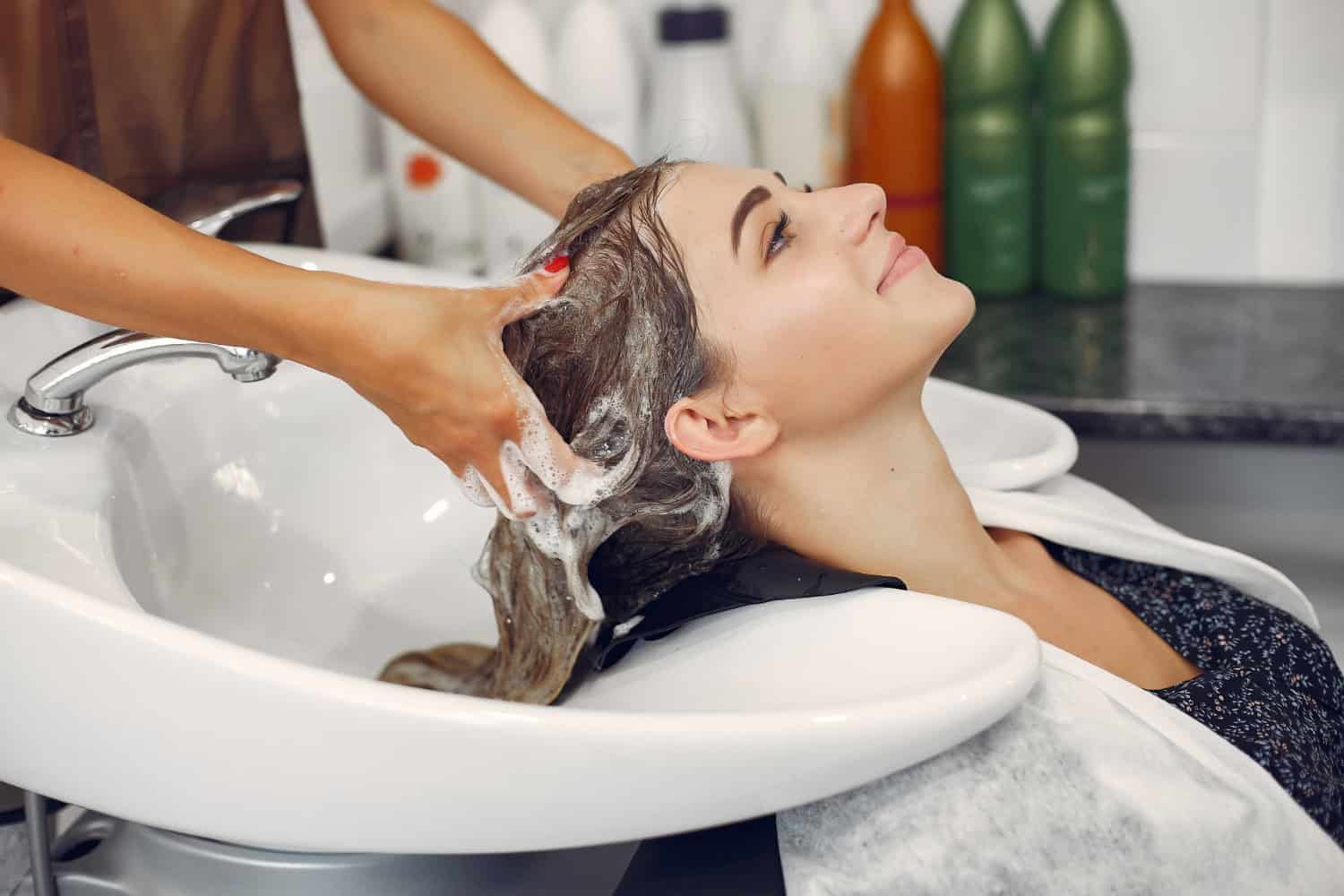Full-service beauty salons and spas are wonderous places where women (and sometimes men) can get their hair done, have a mani-pedi, get a massage, have a facial, and be pampered in dozens of ways.
Salons and spas have a lot of water requirements. Here’s what you need to know about your beauty salon hot water needs.
Where Do Salons and Spas Use Hot Water?
Salons and spas use a ton of water, and maintaining a comfortable temperature is essential for keeping customers happy. So, let’s explore how salons use water and how much they need.
Hair Washing Stations

A reliable source of hot water is vital for hair washing and cleaning the sinks. A shampoo bowl is the perfect breeding ground for bacteria, even if you create a barrier between the sink and the client with neck strips, so there’s no direct contact. You need to clean them between each client, with a deeper cleaning every week or more often if your sinks have more frequent usage. The drains can easily clog with hair, soap, and product residue, and keeping drains running clear is a high priority. Most chemical products and clog dissolvers advise follow-up rinsing with hot water.
When washing a client’s hair, it’s critical to keep the water temperature stable at a comfortable level. Sudden drops or spikes in the water temperature could cause an unpleasant shock or, worse, burn a client. Few things irritate a salon customer more than an uncomfortable hair wash.
Pedicure Stations
Footbaths are another high-risk area for breeding bacteria. The client’s skin, hair, nail clippings and the residue of cosmetic products get caught up in the filters of the foot spa basin. Pedicure bowls must be cleaned and disinfected after each client to avoid spreading bacteria, especially if a client starts to bleed after using razor-type callus shavers.
Bodily fluids can be hazardous substances and carry communicable diseases, so addressing this quickly with an EPA-registered disinfectant solution is important. Footbaths should also be disassembled and thoroughly cleaned at least weekly, with all removed parts inspected before reassembly. Regular maintenance ensures your equipment remains in good repair and adheres to all safety requirements.
Hot Tubs and Jacuzzis
Hot tubs and jacuzzis are popular spa attractions, as so many people love to enjoy a soak in the warm, bubbly water. Unfortunately, hot tubs, jacuzzis, and soaker tubs require a lot of hot water to fill and clean. Most hot tubs and jacuzzis have an automatic cleaning cycle, which should be run regularly in addition to manual cleaning to ensure all the surfaces, filters and nozzles are kept clear of visible debris and properly sanitized. Staying on top of water testing and chemical treatments is crucial to ensure the water remains safe for client use.
When cleaning these, always follow the manufacturer’s directors, and pay attention to safety data sheets. This ensures the use of chemicals is not only safe for your clientele, but prevents equipment damage.

Spa Showers and Bathrooms
Bacteria thrives in showers and bathrooms, so spa workers need to follow a strict cleaning regimen. Regular cleaning with hot, soapy water and chemical sanitizing in damp areas is vital to avoid bacteria and virus growth. Pay special attention to shower cubicles, sinks, faucets, drains, and toilets. Staff should be assigned to clean with a bactericidal, fungicidal and virucidal disinfecting solution at scheduled intervals throughout the day and at the end of the day, making sure to empty every covered waste receptacle and document the time of each cleaning.
Laundry
Towels and washcloths must be gathered and appropriately laundered, which means a hot wash with an unscented laundry detergent and machine drying to keep them soft and fluffy. Depending on client traffic, a home washer and dryer may not be sufficient enough. You may need to invest in regular commercial laundering or purchase commercial machines to run on-site. Commercial machines are larger, so while they can wash larger loads, that also means more water consumption.
Each client must have at least one clean towel. Your staff will also need to use towels to keep all work areas in clean condition, so having plenty of cleaned towels on hand is crucial. While a clean paper towel can take care of a minor spill in the reception area, it’s insufficient for most issues.
General Spa Sanitation Guidelines and Recommendations
When it comes to cleaning and sanitizing your spa, hot water is a must. You use hot water in every aspect of your daily business, from cleaning floor surfaces to sanitizing cosmetology equipment. Even though you’ll have plenty of single-use items, and some tools can be disinfected in a dry heat sterilizer, you probably use more water than you think. So, how much hot water will you need to meet your salon water requirements?
Legal Salon Hot Water Requirements
All states have business regulations concerning hot water. In most states, hot water from the faucet used for hand or hair washing should be between 110°F and 120°F, but some states require a maximum temp of 115°F.
Plumbing fixtures must be protected against back-siphonage or backflow, and wastewater must have proper drainage.
Check your state laws to verify your water temperature complies, and have your water heater checked regularly to ensure it continues to work correctly.
How Much Hot Water Does a Salon Need?

To ensure you have a water heater capable of producing enough hot water to meet your needs, you must first calculate your salon water requirements. Start by benchmarking each salon area.
For example, you can start with the average number of shampoos performed at your salon hair wash station and how long each wash takes on average. A running faucet typically uses 1-3 gallons of water per minute. Assuming two gallons per minute on average for a sink and 2.5 gallons per minute for showers, you’ll be in the ballpark for average use.
If your salon averages three customers per hour per sink, and each wash takes 7 – 10 minutes, that’s 14 – 20 gallons of water per wash and 42 – 60 gallons per hour of operation. So naturally, aside from spa sanitation operations, most of your water will be comfortably warm, not hot—most people like warm water at about 100°F. You may prefer much hotter water at home, but for the general public, warm is best.
Calculate your total salon water requirement by estimating hot water use for each work area and service, then ensure your water heater can handle the load. Don’t forget to consider that you’ll also use warm water for hand washing – for clients and staff members. If you find yourself consistently running out of hot water during your hours of operation, it may be time to upgrade to a larger unit.
Home salons won’t use as much clean water as commercial ones simply because they don’t have the commercial space required to take on multiple clients – but that’s not to say they still don’t require a quality water heater to meet safety standards.
If this all seems complicated, it may be time to consult an expert. We’ll be happy to recommend the high-efficiency water heater you need to handle all your salon water requirements and ensure your customers are treated to a safe, soothing, and consistent experience every time they visit.